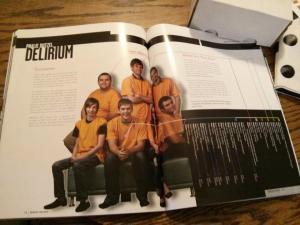Delirium: A Postmortem
Roughly two years ago, I began work on a project that would later become known as “Delirium.” The project was intended to be a 2D horror platformer made in XNA, and over the course of its development, was featured in university publications and sponsored by our university to attend GDC in hopes of showing off the game. Despite the wonderful efforts of the team and all of the hard work we put into the game, it was never released past an early demo, and the project ultimately ended in May of 2012. Although this post is long overdue, I chose not to write up a postmortem until the realizations of our successes, failures, and what we learned had fully sunk in. The following write-up will examine what exactly the Delirium team did right and wrong, why the project failed, and what we can take away from it all, even a year later.

